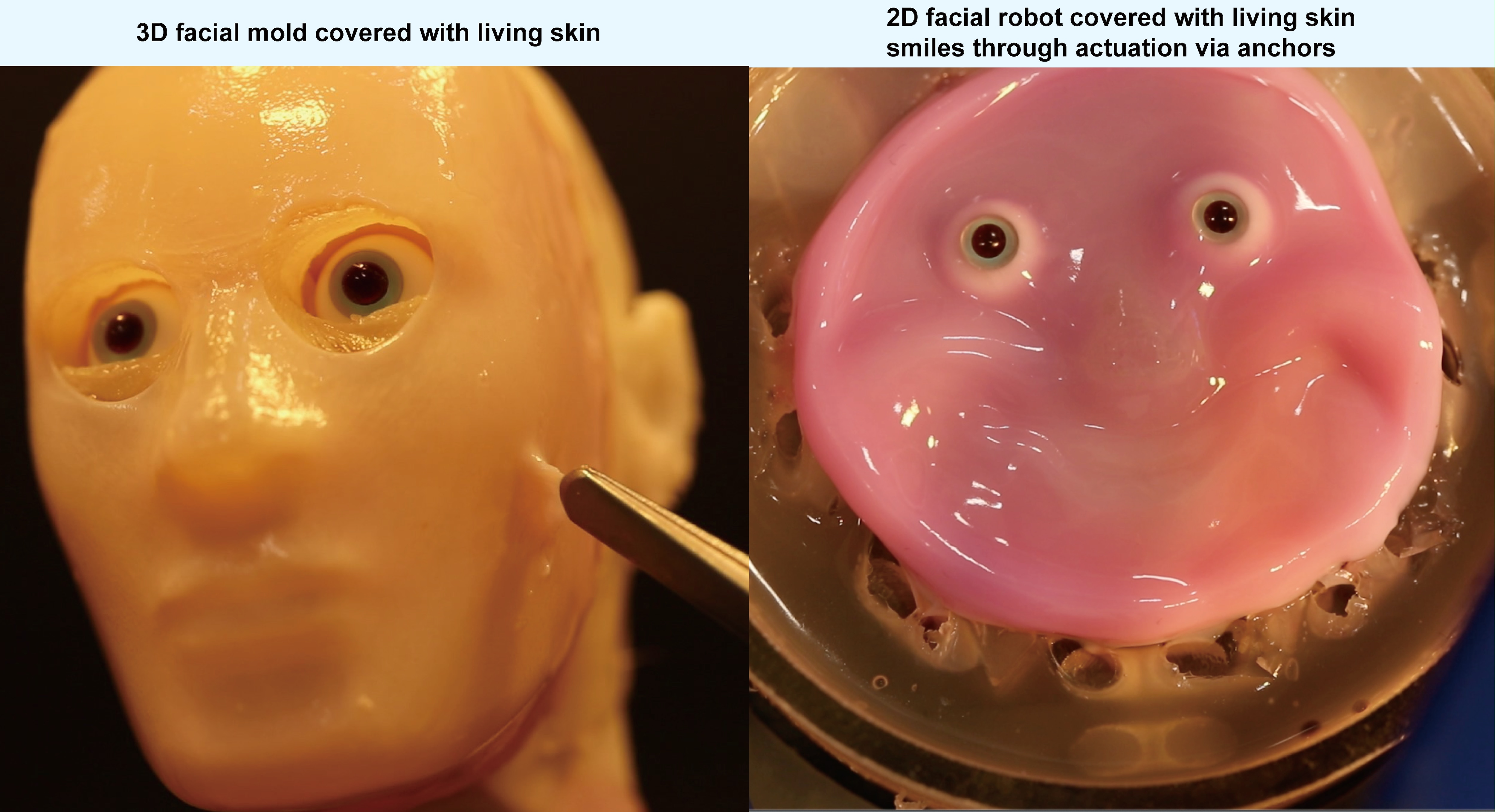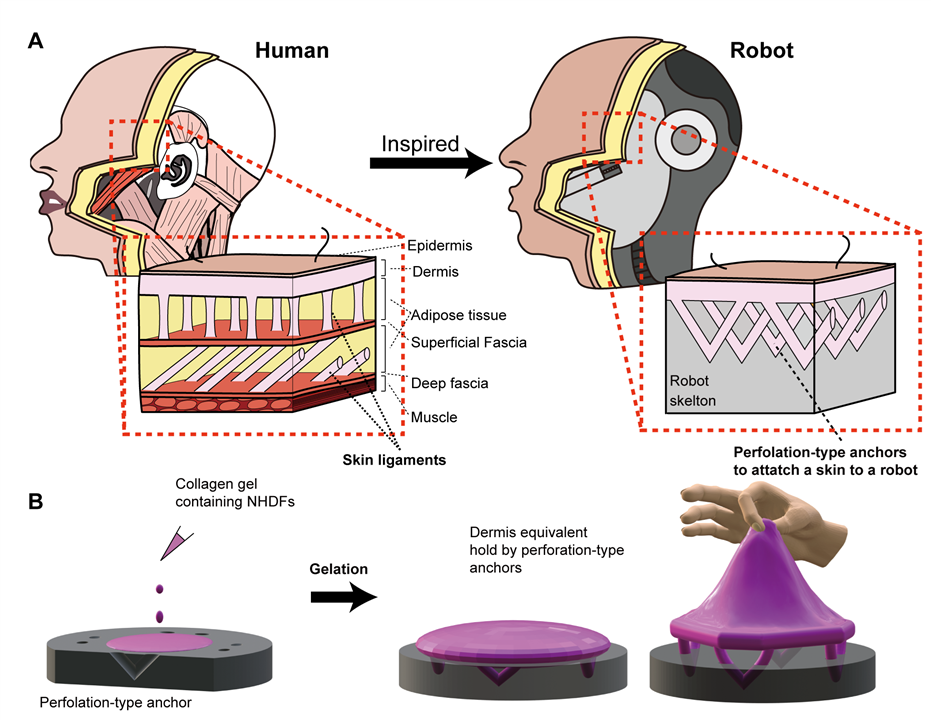
The left image shows a 3D mold covered with living skin. The right image shows a 2D facial robot covered with living skin. ©2024 Takeuchi et al. CC-BY-ND
Lifelike robots are starting to take shape and become a reality. Researchers at the University of Tokyo fabricated a human skin robot face. The team suggests skin like this can self-heal when damaged and make the robots look even more human. They hope this could contribute to androids that look and function like humans.
The researchers created this lifelike face by collecting human skin cells from excess skin during surgeries before growing them in a lab. This process is akin to producing cultured meat. "We managed to replicate human appearance to some extent by creating a face with the same surface material and structure as humans," said Professor Takeuchi, a pioneer in the field of biohybrid robotics.

The skin tissue, inspired by human tissue ligaments, adheres to the underlying structure of the robot's features. ©2024 Takeuchi et al. CC-BY-ND
However, attaching this engineered skin tissue to an acrylic-based resin robot face proved challenging. Usually, mini anchors can get the job done. But those may harm the tissue while it moves, and some surfaces may not be able to have a skin coating applied to them.
To address that issue, the researchers replicated human skin ligaments made of collagen and elastin. They also made tiny v-shaped perforations in the robot's face. But the collagen gel is viscous, which makes it harder for it to feed into the perforations. They solved that issue by using plasma treatment to coax the collagen into the perforations' fine structures, enabling the skin to stay in place. This also allowed it to make fluid facial expressions. "The natural flexibility of the skin and the strong method of adhesion mean the skin can move with the mechanical components of the robot without tearing or peeling away," said Takeuchi.
With those small perforations, the team says any surface shape can be covered with skin.
"Manipulating soft, wet biological tissues during the development process is much harder than people outside the field might think. For instance, if sterility is not maintained, bacteria can enter and the tissue will die," said Takeuchi. "However, now that we can do this, living skin can bring a range of new abilities to robots. Self-healing is a big deal — some chemical-based materials can be made to heal themselves, but they require triggers such as heat, pressure or other signals, and they also do not proliferate like cells. Biological skin repairs minor lacerations as ours does, and nerves and other skin organs can be added for use in sensing and so on."
The team hopes this could help in medical research. While organ-on-a-chip is useful for drug development, face-on-a-chip could be practical for research like cosmetics, skin aging, surgical procedures, plastic surgery, and more. Embedding sensors in the face may even provide robots with better environmental awareness and interactivity. The team wants to integrate muscle-like actuators inside the robot so it will form various humanlike expressions.
Innovative as it seems, I find it kind of disturbing.
Have a story tip? Message me at: http://twitter.com/Cabe_Atwell
